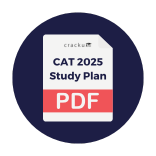The passage below is accompanied by a set of six questions. Choose the best answer to each question.
Creativity is at once our most precious resource and our most inexhaustible one. As anyone who has ever spent any time with children knows, every single human being is born creative; every human being is innately endowed with the ability to combine and recombine data, perceptions, materials and ideas, and devise new ways of thinking and doing. What fosters creativity? More than anything else: the presence of other creative people. The big myth is that creativity is the province of great individual geniuses. In. fact creativity is a social process. Our biggest creative breakthroughs come when people learn from, compete with, and collaborate with other people.
Cities are the true fonts of creativity... With their diverse populations, dense social networks, and public spaces where people can meet spontaneously and serendipitously, they spark and catalyze new ideas. With their infrastructure for finance, organization and trade, they allow those ideas to be swiftly actualized.
As for what staunches creativity, that's easy, if ironic. It's the very institutions that we build to manage, exploit and perpetuate the fruits of creativity — our big bureaucracies, and sad to say, too many of our schools. Creativity is disruptive; schools and organizations are regimented, standardized and stultifying.
The education expert Sir Ken Robinson points to a 1968 study reporting on a group of 1,600 children who were tested over time for their ability to think in out-of-the-box ways. When the children were between 3 and 5 years old, 98 percent achieved positive scores. When they were 8 to 10, only 32 percent passed the same test, and only 10 percent at 13 to 15. When 280,000 25-year-olds took the test, just 2 percent passed. By the time we are adults, our creativity has been wrung out of us.
I once asked the great urbanist Jane Jacobs what makes some places more creative than others. She said, essentially, that the question was an easy one. All cities, she said, were filled with creative people; that's our default state as people. But some cities had more than their shares of leaders, people and institutions that blocked out that creativity. She called them "squelchers."
Creativity (or the lack of it) follows the same general contours of the great socio-economic divide — our rising inequality — that plagues us. According to my own estimates, roughly a third of us across the United States, and perhaps as much as half of us in our most creative cities — are able to do work which engages our creative faculties to some extent, whether as artists, musicians, writers, techies, innovators, entrepreneurs, doctors, lawyers, journalists or educators — those of us who work with our minds. That leaves a group that I term "the other 66 percent," who toil in low-wage rote and rotten jobs — if they have jobs at all — in which their creativity is subjugated, ignored or wasted.
Creativity itself is not in danger. It's flourishing is all around us — in science and technology, arts and culture, in our rapidly revitalizing cities. But we still have a long way to go if we want to build a truly creative society that supports and rewards the creativity of each and every one of us.
In the author's view, cities promote human creativity for all the following reasons EXCEPT that they
In the paragraph starting with 'cities are true fronts of creativity', author mentions that cities have diverse population.
The author also mentions that cities provide the space where people can meet and share ideas. Then, the author discusses the financial and organizational infrastructure that cities provide for ideas to flourish.
No where has it been mentioned that cities provide access to cultural activities. We cannot infer option D from the passage.
Therefore, option D is the right answer.
Video Solution

Create a FREE account and get:
- All Quant CAT complete Formulas and shortcuts PDF
- 38+ CAT previous year papers with video solutions PDF
- 5000+ Topic-wise Previous year CAT Solved Questions for Free




